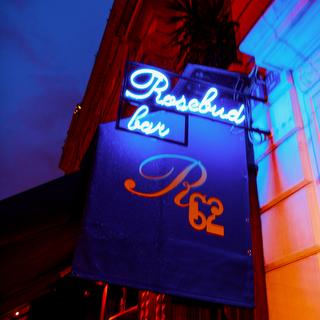


The revival of the Rosebud bar, a historic artist hangout in Paris's Montparnasse neighborhood
Long ReadWhen it opened in 1962, the bar was a hangout for writers such as Marguerite Duras, Samuel Beckett, Jean-Paul Sartre and Simone de Beauvoir. It had lost some of its luster but is now being revived by a new generation of artists.
In his youth, author Patrick Modiano was a regular at the Rosebud in Paris's 14th arrondissement and never bypassed the nighttime spot with its tightly drawn curtains and wood-paneled counter. He was to become a writer known for melancholy, and in a few lines described the atmosphere of the streets between the train station and the Montparnasse cemetery. "As I recall, it was often raining there, whereas in my dreams, I always see other areas of Paris bathed in sunshine," he wrote in L'Herbe des nuits (The Black Notebook, 2016 ). In his previous work Fleurs de ruine (Flowers of Ruin, 2014), he described how this corner of the Left Bank had always seemed to be an "entire neighborhood [that] has become gently detached from Paris." In the middle of this was the Rosebud, where a mysterious figure takes the narrator and tells him: "It's very pleasant here..."
When it opened in 1962 the bar took the name "rosebud" as a tribute to the last word uttered by the dying protagonist in Orson Welles's film Citizen Kane (1941). In the film, a journalist investigates the meaning that the reclusive billionaire gave to the word. The viewer comes to understand that it was a happy childhood memory. For movie lovers, the term has become synonymous with bygone happiness. And, in a sweet irony, this bar, which no one knows whether Welles frequented during one of his visits to Paris, is also a rosebud.
It's the memory of the ghosts of Paris ever-present in an area that has nothing to do with that of the cliché-filled Emily in Paris series. It harks back to a time when, in this tiny spot, you might have found yourself sitting next to Samuel Beckett, Jean-Paul Sartre, Simone de Beauvoir or Marguerite Duras. It's the taste of forgotten spirits, served by waiters in white jackets and a thousand past lives of petty crooks and young leading lights. It's the feel of skin against leatherette, crackling light bulbs and encounters with a stranger scribbling their phone number on a matchbook.
You have 88.74% of this article left to read. The rest is for subscribers only.
